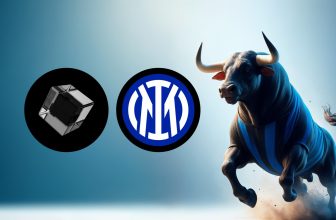
What you'll learn 👉
Table Of Contents
Monero (XMR) is a Proof of Work (PoW) cryptocurrency that relies on Ring Signatures in order to provide a certain degree of privacy when making a transaction. Monero was launched in April 2014 and it currently sits around the top 10 of cryptocurrencies by marketcap.
Similar to Zcash mining and Ethereum mining, Mining with Monero is pretty simple and straight forward. You can mine Monero with your CPU, using even your old laptops. Mining Monero can be a profitable venture because of its cryptographic algorithm which is resistant to ASIC’s mining, which means that anyone with a CPU or GPU can mine for Monero.
In this guide we’re going to do a detailed walk-through of setting up Minergate and a Claymore miner (its version for the CPU, called CryptoNote), and how to set these programs up so you can mine Monero in just a matter of minutes.
For AMD cardholders, Ethereum mining is the most profitable, but AMD Graphic cards are also optimal for Monero Mining. Monero stands out due to several unique characteristics – above all, confidentiality level. Monero has many fans in crypto space and periodically there are strong price increases.
The whole process of downloading your miner, installing and configuring it takes less than 20 minutes. Here are a couple of reasons why you should try mining Monero:
- Bitcoins can easily be exchanged into fiat, so mining Monero can be a good way to indirectly could be an excellent way to indirectly load your checking account or make money. In addition, Monero can also be sold directly on some major crypto exchanges (such as Poloniex, Bitfinex and Kraken).
- Since Monero received recognition in darknet in 2016, it has been one of the most promising altcoin markets during the last year.
- Mining Monero may allow you to take advantage of price in the future, given Monero’s high volatility.
- Mining Monero with low-end video cards can be a great way to subsidize the purchase of a new, high-end GPU (or 2. or 3…) for mining Monero or other cryptos.
- Monero mining on the CryptoNote algorithm consumes less electricity compared with mining on Equihash-based coins (Zcash, Zencash, Hush) and Ethash / Dagger Hashimoto (Ethereum, Ethereum Classic, UBQ), which allows you to lower the temperature of the equipment and extend its service life.
The competition in mining Monero is pretty low yet. This allows you to take advantage of it and mine a good deal of Monero coins, which will allow you to take full advantage of its potential rise in price – with less risk than with a normal purchase.
Mining and holding cryptos, including Monero, resemble the old saying of buying low and selling high. However, in this case, most buyers buy and sell at the wrong times because they don’t know how to do technical analysis. They invest money at the peak of growth and sell during correction.
Purchasing equipment and mining crypto with it enables you to have an income-producing property in the equipment itself. Its value in the secondary market is at a high level and sometimes even exceeds the purchase price. Due to high demand in the market, in 2018 graphics cards bought for mining rigs in 2015, 2016, and 2017 are often sold at a price higher than their original cost.
In other words, selling used mining equipment will allow you to return nearly all your money back (and sometimes even make a profit as well), and the coins produced are a pleasant bonus.
The Difference between Monero’s Blockchain and Bitcoin’s Blockchain
ASIC is special hardware developed for the purpose of mining Bitcoin. However, Monero uses a different hashing algorithm than Bitcoin’s, which means that it is impossible to mine XMR through the ASICs. Monero hashing algorithm is known as CryptoNight, which is an asymmetric memory-hard PoW algorithm based on the generalized birthday problem. CryptoNight is a proof-of-work (PoW) algorithm that is designed to be suitable for ordinary PC CPUs, but is demanding in terms of RAM and thus prevents the use of ASIC chips.
Monero is intentionally designed in such a way as to be optimal for CPU and GPU mining. The main feature of Monero is the use of a protocol based on ring signatures designed to make it a leading privacy-based crypto in the market (competing with other privacy coins such as Zcash and Dash).
Compared to Bitcoin’s 10-minute blocks, the block time of Monero is 2-minute.
Monero Hashrate, Difficulty, and Price
Since its launch in the 4Q of 2016, the total hashing speed of Monero network has been climbing rapidly, as it can be seen from this chart from Monero.net:

As you can see, the amount of hardware dedicated to Monero mining is rising. However, block calculation time has not been reduced, so the question is why aren’t blocks being mined more and more rapidly to decrease the average 2-minute block time?
The answer is growing mining difficulty. Block Monero automatically adjusts block difficulty to maintain 2-minute intervals. The difficulty is closely related to the power of the network, and it, too, has seen exponential growth this year:
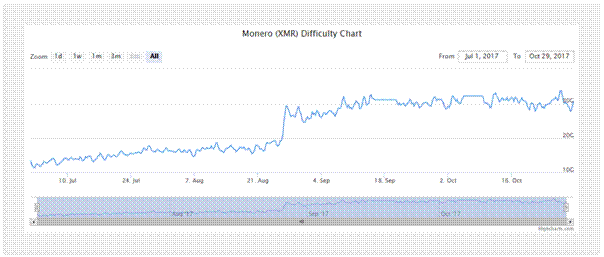
But why do the hashrate and difficulty grow rapidly? There’s a simple economic answer – because of the price! Check out the chart below from CoinMarketCap:

The thing is that the network computation capacity closely follows the price explosion, which led to the boom of altcoins that erupted in the summer of 2017 (in September Monero spiked over 350%). The price of Monero’s XMR token has experienced significant volatility at times, climbing more than 1,300% since it began trading. Since inception, the cryptocurrency has fluctuated between roughly $0.25 (in January 2015), close to $60 (in May 2017) and $160 (in September 2017). What an amazing bull run, don’t you agree?
How to Calculate Monero Mining Profitability?
Now that we have a clearer understanding of the Monero blockchain, it’s time to do some economic calculations.
First, head over to whattomine.com, where you will find the most important information about Monero – its latest prices, block calculation time and hashing speed (in millions of operations per second, or MH/s (megahashes per second)).
Plug in your card at the top and click on the model number (the red square below), and you will see all the information about hashing and profitability (for Monero click “CryptoNight” to make it blue so it will calculate).
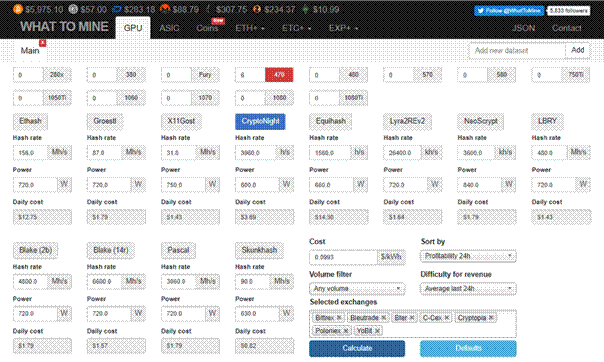
The numbers will change over time. However, for the purpose of this example, we would net roughly $1 per day per GPU, depending on the model and configuration.
Key Criteria for Choosing the Best Monero Mining Hardware
In order to choose the proper Monero mining hardware in the market, you should define key criteria that will determine the efficiency of each video card. There can be the following basic criteria:
- Hashrate – Hashrate displays how many hashes can be carried out by a video card within a second and is calculated in H/s, Kh/s, Mh/s, Gh/s, and Th/s (from the lowest to the highest). It’s important to note that hashrate can be improved by overclocking your video card.
- Power draw – This shows how much electricity a video card consumes during the process of mining cryptocurrencies. The lower electricity consumption is, the lower your regular costs will be.
- Price – The upfront price you pay for a video card is a one-time payment, which will have to be paid back, so you’ll want to factor the price of a video card into your considerations. However, don’t necessarily fall for cheap Monero mining hardware because the higher is the price of a video card, the more efficient and productive it is going to be. I admit that I saw a ridiculously low price for a video card. However, these video cards will burn tons of electricity but will leave you with few Monero coins. However, also don’t be hooked by the merchants who sell overpriced hardware that will be $100 in few years.
- Efficiency – Efficiency shows how much hashes are made during a certain expenditure of electricity and is calculated by dividing the hash rate by the power draw indicator.
How to Choose Your Hardware?
Experimentation with various GPU selections in the calculator will help you select the model with the best price/performance/energy consumption correlation (in MH/s per currency unit). Keep in mind that AMD cards tend to outperform the Nvidia counterparts when mining ETH using EthashAlgo, but they lose slightly in the case of Equihash mining using the EWBF Miner. Both AMD and Nvidia Graphic cards are optimal for Monero Mining.
One of CryptoNight’s advantages lies in the possibility of mining with CPUs. A powerful processor from the family of Intel i5 or i7 CPU is suitable for mining Monero.
Pro Tip: We recommend the following GPUs: AMD RX 470/480, RX 570/580, R9 or HD 7990/7950.
If you decide to purchase used graphics cards, it’s highly recommended to get them from a gamer instead of a miner, and, preferably, still under a guarantee. One more thing worth noting is that you should carefully compare the performance, power consumption, availability and price of various GPUs.
Monero Profitability Calculators
In order to understand Monero mining profitability you should try using these three profitability calculators:
The best way to see the most probable profit is to take the average number from these three calculators.
How to Mine Monero on Windows?
We’ll look at Monero mining on Windows 10, which is pretty simple and straight forward. However, there are some adjustments you will need to make to Windows 10 to ensure that you get the most out of your CPU and GPU when mining Monero.
You can also mine Monero on Windows 7, 8, Linux and Mac OS.
Depending on what kind of hardware you have installed (AMD or Nvidia), you will need drivers for it.
AMD GPUs
If you have AMD cards, then the drivers for AMD can be found here. Download your GPU drivers, select “Drivers and support” section, enter your GPU information and click Display Results.
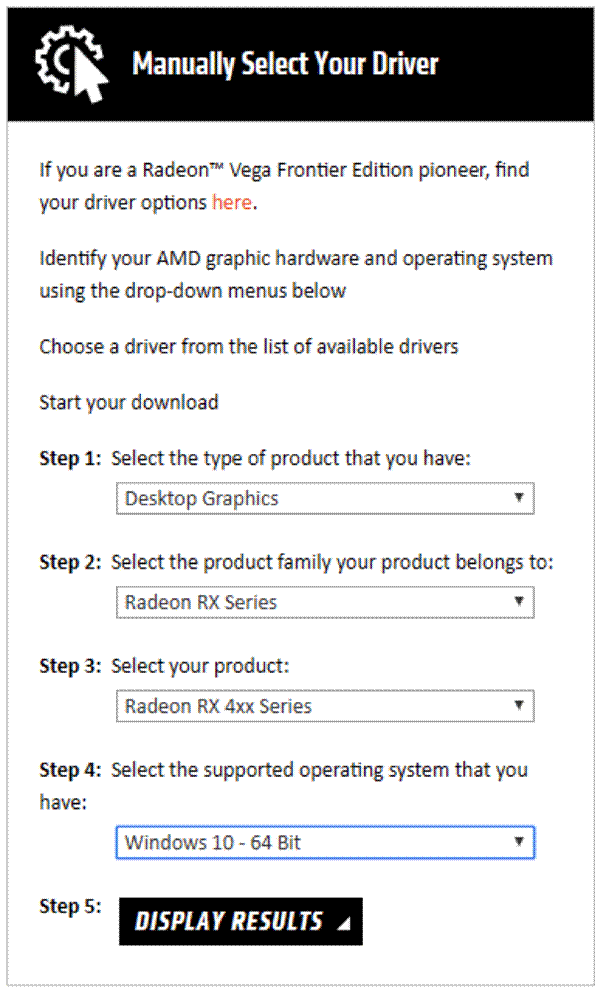
You can click the Download button for the current driver or choose to download previous drivers (“Download Previous Drivers & Software” button), perfect for mining: R9 and earlier: version 15.12 RX 4XX: 16.9.2 or 16.10.3 RX 5XX. We highly recommend using the latest driver version because these are brand new cards.
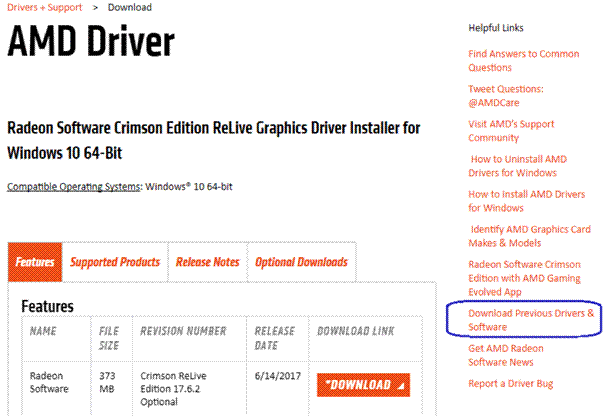
Nvidia GPUs
If you have Monero mining hardware from Nvidia, you can find the latest drivers here. Enter information about your model, click “Start Search,” download the current version from the results, install your GPU drivers as you normally would, and restart the computer.

The driver has been installed successfully if you go to Device Manager and you don’t see any warning marks on your GPUs (it should look something like this):

Important Note: Some miners install several GPU and only after that configure the drivers, while others prefer to install only one card, install the drivers, shut down the system, and then install the rest of the GPUs. When you turn on your computer, Windows will automatically detect the installed hardware.
If you run into a problem with one of these methods, delete the drivers and try again.
- Register on Minergate
You need to register on Minergate website in order to simultaneously mine on all computers (including laptops) with your CPUs and GPUs. Click “Registration” in the upper right corner and set up your account with a valid email address and secure password.
- Download Minergate Software
The next step is to download the Minergate software, an easy to use cryptocurrency miner that allows you to mine several cryptocurrencies with a single click! It’s very easy to get mining with this easy-to-use platform. Click on the “Downloads” button to download and install Minergate (the website will detect your operating system and present you with the correct version – for Windows, Mac or Linux). Once the installation is completed, launch the program, enter the e-mail address and password used for registering on the site and click “Start Mining” button.
After that, click “Start Smart Mining” button and the program will automatically detect your equipment and choose the most profitable cryptocurrency to mine according to your hardware, market price and difficulty. For most computers this will be Monero. That’s it. Minergate prouds itself on making mining as easy as possible!

This image shows mining on a laptop with an old Intel i7 2630 processor and integrated graphics.

This image shows mining on Intel Celeron 1840 with four AMD RX 470 graphics accelerators. Your performance with Minergate GUI smart mining will depend on equipment characteristics.

The ability to mine Monero at the click of a mouse is very encouraging, because you do not need to go deep into configurations and work with bat-files. Just click the button and you are already mining Monero and earning money… Isn’t that amazing?
Important Note: Minergate has its own built-in wallet in order to allow users to start mining even if they don’t have a wallet address set up.
Did you know that you can maximize the Monero mining and raise the productivity of your equipment by almost 2.5 times? Read on to see how you can do that.
- Advanced level: How to maximize Monero mining?
Nvidia Cards
On mining rigs that have Nvidia cards, you should use the EWBF program-miner. However, if you have a powerful processor (Intel i5, i7 or AMD analog), you can mine on it using Minergate. You can mine several coins at the same time because the Minergate platform does not conflict with the EWBF or Claymore miners.
AMD Cards
On systems with AMD video cards, Claymore miner will take you to the next level because it is optimized for the CryptoNight algorithm.
To install it, go back to the Minergate downloads page, scroll all the way down, and click on Alternative Miners. Click on that option on the left if it doesn’t take you to the Claymore CryptoNote GPU Miner page.
Download the bat-file for XMR by clicking on the download button on the right, go back up and go to bitcointalk (it’s highly recommended to download miners only from official bitcointalk threads), download the miner and extract it to the desktop.
Move the previously downloaded .bat file into the Claymore CryptoNote Miner folder on your desktop. In order for it to run properly, it should be in the same directory as the executable program file.
- Change the settings of your Windows
You will need to modify some Windows settings before you get down to mining Monero. The first thing you should do in order not to let your mining be failed is to disable the Sleep Mode. If your computer gets in the Sleep Mode, it will interrupt your mining. To disable Sleep Mode, go to the “Power pan settings” and choose “Sleep mode” to “Never”.
After that, you will have to ensure you have the correct virtual memory enabled – 16 GB (16384 MB) is the minimum. To do this, search for system in the start menu, open system and on the left hand side click ‘Advanced System Settings.’ Go under the advanced tab, under performance settings, and advanced again and click ‘Change’ under virtual memory. Uncheck “Automatically manage paging file,” click the radio button for Custom Size and enter 16384 for the Initial size and Maximum size, which will prevent you from having any errors with virtual memory, Then click OK to confirm your choice.
It’s also recommended to disable Windows Updates in order to minimize miner failure and system intervention. If you feel more secure leaving updates on, you can do so. However, keep in mind that if it is active, the system will automatically download updates, install them and reboot, and that will interfere with the miner.
Finally, if you use Windows Defender or any other antivirus program, add an exclusion to it so that it does not take the miner for the virus and disable or delete it.
- Run the miner
Once you have configured your software to start mining in a pool, give a double-click to the bat file to start the miner.
If the Windows Firewall pops up, confirm your choice and Claymore CryptoNote will boot and begin to mine Monero.
In our example, when using the Minergate platform, 4 RX 470 cards calculated approximately 1000 hashes per second. However, with Claymore the performance increased almost 2.5 times more – to 2,400 x/s. When it comes to AMD miners, Claymore is a beast and it has proven so time and again.
In addition, Claymore is operating under the Minergate account. This means that you can run the Minergate for CPU mining.
- Follow your results
And that’s it, you’re ready to mine for Monero. Simply click the Start.bat file and you should start mining. You can also track the activity of the miners and the overall results. Click on the Withdraw button to send the Monero you have mined to another wallet or crypto exchange.
Congratulations!! You are now mining Monero!!!
Conclusion
Investing in cryptocurrencies is always a serious matter, and you should approach this issue responsibly. I hope you’ve found this beginner’s guide on mining Monero on your PC useful!
One more thing worth noting is that you can find additional settings under the config file if you ever need to make changes or tweaks due to crashing, or changes to your mining pool.
Happy mining!



